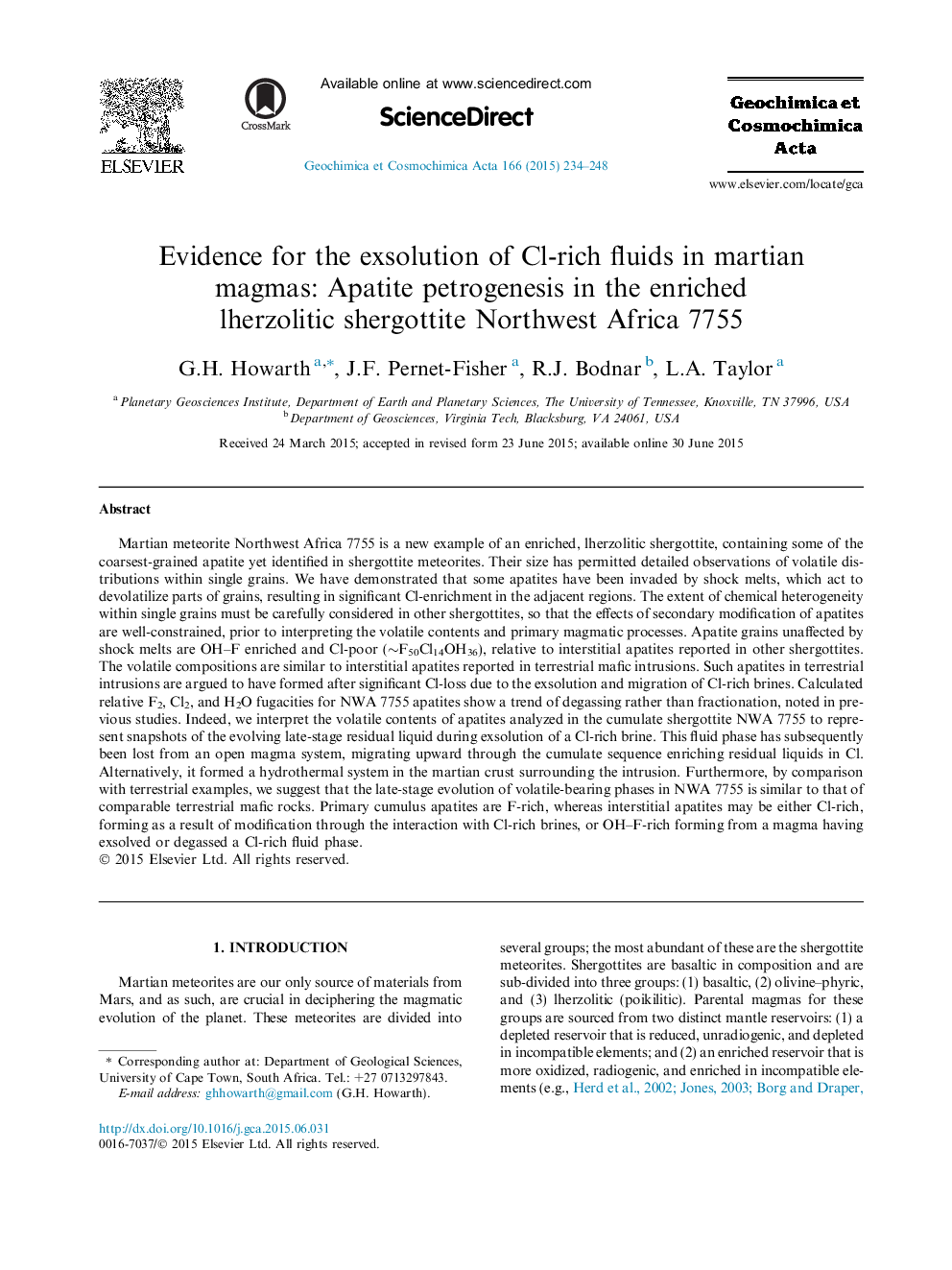| Article ID | Journal | Published Year | Pages | File Type |
|---|---|---|---|---|
| 6437812 | Geochimica et Cosmochimica Acta | 2015 | 15 Pages |
Abstract
Martian meteorite Northwest Africa 7755 is a new example of an enriched, lherzolitic shergottite, containing some of the coarsest-grained apatite yet identified in shergottite meteorites. Their size has permitted detailed observations of volatile distributions within single grains. We have demonstrated that some apatites have been invaded by shock melts, which act to devolatilize parts of grains, resulting in significant Cl-enrichment in the adjacent regions. The extent of chemical heterogeneity within single grains must be carefully considered in other shergottites, so that the effects of secondary modification of apatites are well-constrained, prior to interpreting the volatile contents and primary magmatic processes. Apatite grains unaffected by shock melts are OH-F enriched and Cl-poor (â¼F50Cl14OH36), relative to interstitial apatites reported in other shergottites. The volatile compositions are similar to interstitial apatites reported in terrestrial mafic intrusions. Such apatites in terrestrial intrusions are argued to have formed after significant Cl-loss due to the exsolution and migration of Cl-rich brines. Calculated relative F2, Cl2, and H2O fugacities for NWA 7755 apatites show a trend of degassing rather than fractionation, noted in previous studies. Indeed, we interpret the volatile contents of apatites analyzed in the cumulate shergottite NWA 7755 to represent snapshots of the evolving late-stage residual liquid during exsolution of a Cl-rich brine. This fluid phase has subsequently been lost from an open magma system, migrating upward through the cumulate sequence enriching residual liquids in Cl. Alternatively, it formed a hydrothermal system in the martian crust surrounding the intrusion. Furthermore, by comparison with terrestrial examples, we suggest that the late-stage evolution of volatile-bearing phases in NWA 7755 is similar to that of comparable terrestrial mafic rocks. Primary cumulus apatites are F-rich, whereas interstitial apatites may be either Cl-rich, forming as a result of modification through the interaction with Cl-rich brines, or OH-F-rich forming from a magma having exsolved or degassed a Cl-rich fluid phase.
Related Topics
Physical Sciences and Engineering
Earth and Planetary Sciences
Geochemistry and Petrology
Authors
G.H. Howarth, J.F. Pernet-Fisher, R.J. Bodnar, L.A. Taylor,
